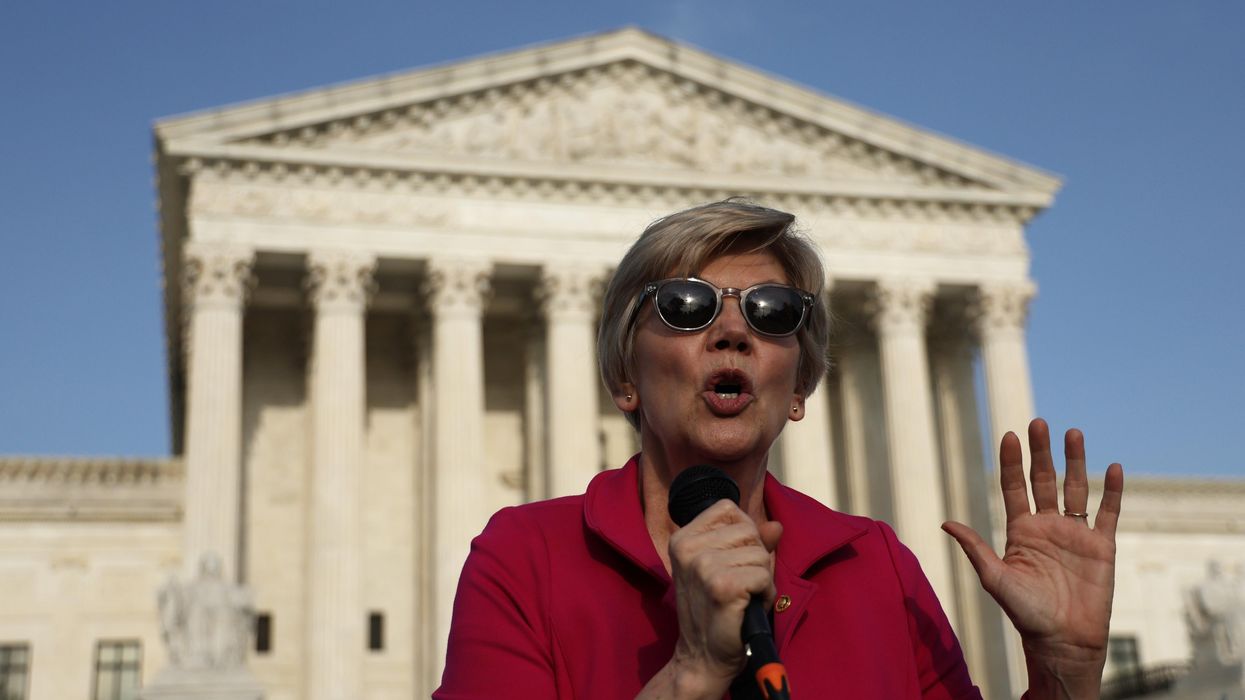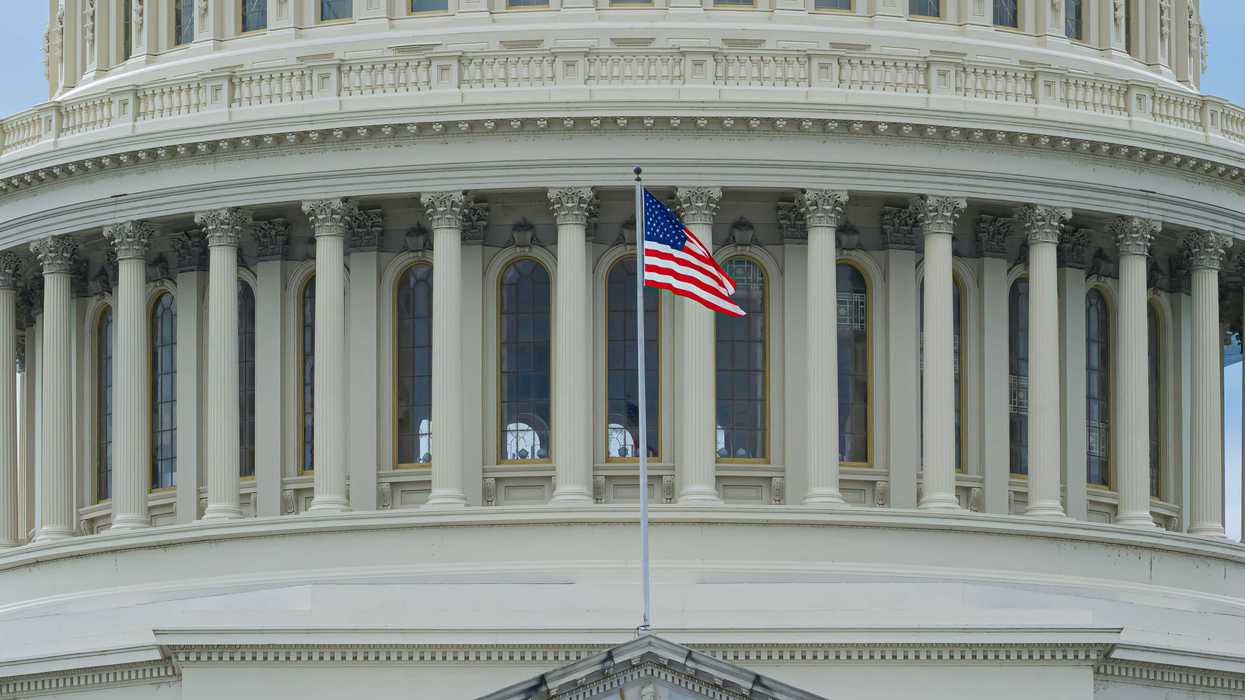McClain is a professor of law at Boston University.
Abortion rights advocates are looking for alternative ways to protect a woman’s right to the procedure following the publication of a leaked draft opinion from Justice Samuel Alito indicating that the Supreme Court intends to overturn Roe v. Wade.
“Congress must pass legislation that codifies Roe v. Wade as the law of the land in this country NOW,” tweeted Sen. Bernie Sanders as news broke on May 2, 2022. His plea was echoed a day later by Democrats, including Sen. Elizabeth Warren and President Joe Biden.
But is enshrining abortion rights in legislation feasible? And why has it not been done before? The Conversation put these questions and others to Linda C. McClain, an expert on civil rights law and feminist legal theory at Boston University School of Law.
What does it mean to ‘codify’ Roe v. Wade?
In simple terms, to codify something means to enshrine a right or a rule into a formal systematic code. It could be done through an act of Congress in the form of a federal law. Similarly, state legislatures can codify rights by enacting laws. To codify Roe for all Americans, Congress would need to pass a law that would provide the same protections that Roe did – so a law that states that women have a right to abortion without excessive government restrictions. It would be binding for all states.
But here’s the twist: Despite some politicians saying that they want to “codify Roe,” Congress isn’t looking to enshrine Roe in law. That’s because Roe v. Wade hasn’t been in place since 1992. The Supreme Court’s Planned Parenthood. v. Casey ruling affirmed it, but also modified it in significant ways.
In Casey, the court upheld Roe’s holding that a woman has the right to choose to terminate a pregnancy up to the point of fetal viability and that states could restrict abortion after that point, subject to exceptions to protect the life or health of the pregnant woman. But the Casey court concluded that Roe too severely limited state regulation prior to fetal viability and held that states could impose restrictions on abortion throughout pregnancy to protect potential life as well as to protect maternal health – including during the first trimester.
Casey also introduced the “ undue burden” test, which prevented states from imposing restrictions that had the purpose or effect of placing unnecessary barriers on women seeking to end a pregnancy prior to viability of the fetus.
What is the Women’s Health Protection Act?
Current efforts to pass federal legislation protecting the right to abortion center on the proposed Women’s Health Protection Act, introduced in Congress by Congresswoman Judy Chu and sponsored by Senator Richard Blumenthal in 2021. It was passed in the House, but is blocked in the Senate.
The legislation would build on the undue burden principle in Casey by seeking to prevent states from imposing unfair restrictions on abortion providers, such as insisting a clinic’s doorway is wide enough for surgical gurneys to pass through, or that abortion practitioners need to have admitting privileges at nearby hospitals.
The Women’s Health Protection Act uses the language of the Casey ruling in saying that these so-called TRAP (Targeted Regulation of Abortion Providers) laws place an “undue burden” on people seeking an abortion. It also appeals to Casey’s recognition that “the ability of women to participate equally in the economic and social life of the Nation has been facilitated by their ability to control their reproductive lives.”
Has the right to abortion ever been guaranteed by federal legislation?
You have to remember that Roe was very controversial from the outset. At the time of the ruling in 1973, most states had restrictive abortion laws. Up to the late 1960s, a majority of Americans opposed abortion. A poll at the time of Roe found the public evenly split over legalization.
To pass legislation you have to go through the democratic process. But if the democratic process is hostile to what you are hoping to push through, you are going to run into difficulties.
Under the U.S. system, certain liberties are seen as so fundamental that protecting them should not be left to the whims of changing democratic majorities. Consider something like interracial marriage. Before the Supreme Court ruled in Loving v. Virginia State that banning interracial marriages was unconstitutional, a number of states still banned such unions.
Why couldn’t they pass a law in Congress protecting the right to marry? It would have been difficult because at the time, the majority of people were against the idea of interracial marriage.
When you don’t have sufficient public support for something – particularly if it is unpopular or affects a non-majority group – appealing to the Constitution seems to be the better way to protect a right.
That doesn’t mean you can’t also protect that right through a statute, just that it is harder. Also, there is no guarantee that legislation passed by any one Congress isn’t then repealed by lawmakers later on.
So generally, rights have more enduring protection if the Supreme Court rules on them?
The Supreme Court has the final word on what is and isn’t protected by the Constitution. In the past, it has been seen as sufficient to protect a constitutional right to get a ruling from the justices recognizing that right.
But this leaked opinion also points out that one limit of that protection is that the Supreme Court may overrule its own precedents.
Historically, it is unusual for the Supreme Court to take a right away. Yes, they said the Plessy v. Ferguson ruling – which set up the legal basis for separate-but-equal – was wrong, and overruled it in Brown v. Board of Education. But Brown recognized rights; it didn’t take rights away.
If Alito’s draft ruling is to be the final word, the Supreme Court will be taking away a right that has been in place since 1973. For what I believe is the first time, the Supreme Court would be overriding precedent to take away a constitutional right from Americans.
Moreover, the leaked opinion is dismissive of the idea that women have to rely on constitutional protection. “Women are not without electoral or political power,” Alito writes, adding: “The percentage of women who register to vote and cast ballots is consistently higher than the percentage of men who do so.”
But this ignores the fact that women rarely make up close to half of the members of most state legislative bodies.
So are the promises to get Congress to protect abortion rights realistic?
Republicans in the Senate successfully blocked the proposed Women’s Health Protection Act. And unless things change dramatically in Congress, there isn’t much chance of the bill becoming law.
There has been talk of trying to end the filibuster rule, which requires 60 votes in the Senate to pass legislation. But even then, the 50 votes that would be needed might not be there.
What we don’t know is how this Supreme Court leak will affect the calculus. Maybe some Republican senators will see that the writing is on the wall and vote with Democrats. Republican senators Susan Collins and Lisa Murkowski introduced legislation earlier this year that would codify Roe in law, but isn’t as expansive as the Women’s Health Protection Act.
And then we have the midterm elections in November, which might shake up who’s in Congress. If the Democrats lose the House or fail to pick up seats in the Senate, the chances of pushing through any legislation protecting abortion rights would appear very slim. Democrats will be hoping that the Supreme Court ruling will mobilize pro-abortion rights voters.
What is going on at a state level?
Liberal states like Massachusetts have passed laws that codify Roe v. Wade. Now that the Supreme Court’s apparent intentions are known, expect similar moves elsewhere. Other states are looking to go a step further by protecting residents who help out-of-state women seeking abortion. Such laws would seemingly counter moves by states like Missouri, which is seeking to push through legislation that would criminalize helping women who go out of state for abortions.
Wouldn’t any federal law just be challenged at the Supreme Court?
Should Congress be able to pass a law enshrining the right to abortion for all Americans, then surely some conservative states will seek to overturn the law, saying that the federal government is exceeding its authority.
If it were to go up to the Supreme Court, then conservative justices would presumably look unfavorably on any attempt to limit individual states’ rights when it comes to abortion. Similarly, any attempt to put in place a federal law that would restrict abortion for all would seemingly conflict with the Supreme Court’s position that it should be left to the states to decide.
![]()



















 On Jan. 6, 2021, a political rally turned into an insurrection as
On Jan. 6, 2021, a political rally turned into an insurrection as  Michelle Witthoeft, Ashli Babbitt’s mother, participates in a demonstration in support of insurrectionists who were arrested and charged following the January 6, 2021 attack on the U.S. Capitol. (Tasos Katopodis/Getty Images)
Michelle Witthoeft, Ashli Babbitt’s mother, participates in a demonstration in support of insurrectionists who were arrested and charged following the January 6, 2021 attack on the U.S. Capitol. (Tasos Katopodis/Getty Images)